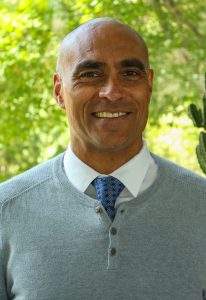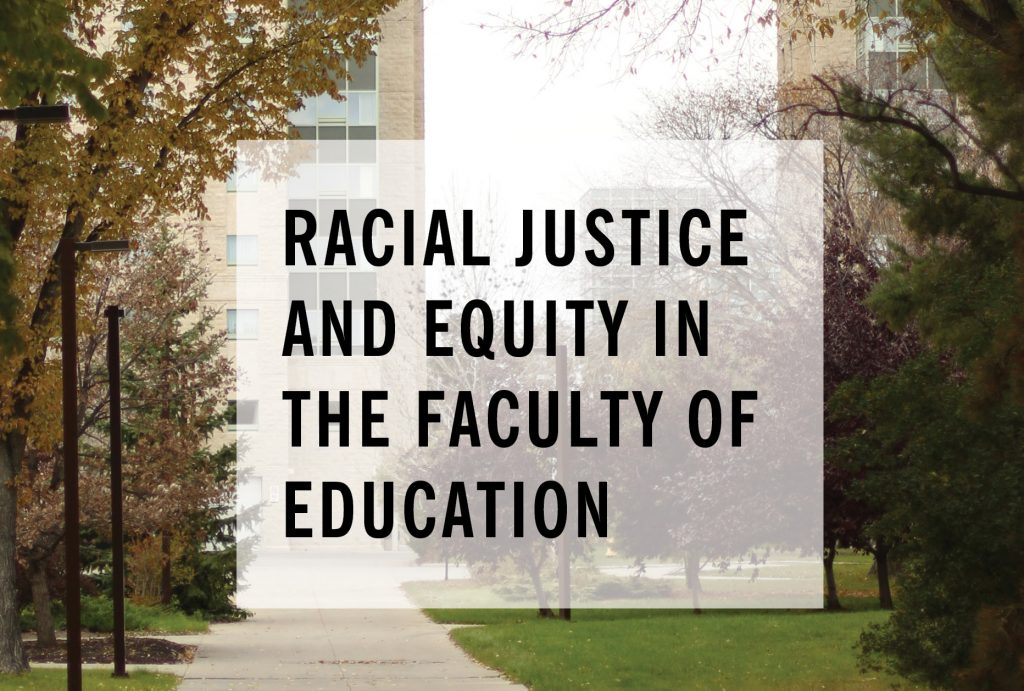
Racial justice and equity are the impetus behind Dr. Jerome Cranston’s research and teaching. As part of an interdisciplinary, international “community of inquiry,” Cranston studies topics that, in his words, “explore formal and non-formal teacher preparation and the ethical dimensions of school leadership with a particular focus on how capacity building in the education system can transform a set of seemingly random acts…into a just enterprise.”
Cranston’s family history explains this focus in part: His maternal grandparents who originated from tribal communities in what are now Nepal and Burma/Myanmar were “anglicized and evangelized as part of the colonial contagion,” says Cranston. His paternal grandfather, a travelling bookkeeper with the East Indian Rail Company, was killed in 1941 during a Japanese bombing of a railway station. His widowed grandmother, a mother of five, died the following year of malnutrition, an outcome of the British-manufactured famine in West Bengal. Singularly and collectively his family’s experiences shaped his earliest experiences of systemic racism.
Cranston says, “I accept a distant yet unvarying connection to the trauma that echoes through the colonized histories of my ancestors.” Yet, says Cranston, it is “impossible to talk about systemic racism without recognizing that it is not only a history, or a memory, but very much a current lived reality for Indigenous, Black, and People of Colour.”
“In the work that I do, race comes first,” continues Cranston. “It foreshadows the work I do and commit to do. From childhood, I’ve known myself to be consummately brown. When I looked in a mirror, I saw a brown face looking back. I endure in a society that doesn’t really want to make a space for me or to create a space for me to belong as I am. In my work, I’ve tried to work towards finding solutions through working with and alongside colleagues, to find ways that will bring greater racial justice.”
In defining systemic racism, Cranston says, “it is important to separate systemic racism from racists. There are individuals who are part of the structure who themselves may not be, in an overt sense, racist. Systemic racism is a pervasive power relation that is reinforced every day through lack of knowledge or ignorance—sometimes ‘willful ignorance,’ (Mills, 2007)—and through policies and practices that may appear to be neutral but have the effect of sustaining and fortifying a system.”
Attempting to dispel the common solution of the need to fix a broken system, Cranston says, “All of us are living in a system that has been imbued, fortified, and strengthened by white domination, white privilege, to the detriment of Indigenous, Black, and People of Colour. The system is doing exactly what it is meant to do. The system is not broken. Rather, the system is designed to do exactly what it was set up to do by the original colonial architects to privilege whiteness over everything else.”
As a critical race theorist and researcher, Cranston says he “uses race-conscious approaches to understand educational inequalities and systemic racism, and to find solutions that lead to greater racial justice for those denied it.” His transdisciplinary work interrogates policies and practices to highlight the overt, and uncover the covert, ways that colonial racial ideologies, structures, and institutions create and maintain racial inequality and injustice in the education system and beyond.
Cranston says, “With the release of the video showing the murder of George Floyd this past summer, it was impossible to ignore the extent of systemic racism in all of our social organizations, not just in policing, but in social services, health, justice and education.”
“The academy is not exempt from systemic racism,” says Cranston. In the academy, there are politics over who is cited, white-architected research methodologies, and salary and progression.
For those who don’t believe that systemic racism exists, Cranston points to three markers: “First, numerical data indicates that racialized people may not get hired into organizations, or may not be able to move into positions of leadership; Second, policies and decision-making processes determine the rules we use to govern ourselves: how we decide that decisions can be made and by who, may be designed to protect a Eurocentric white way of being and conducting business. Third, organizational culture— everything from communication style, to dress code, to the way we socialize—will favour white society: a privileged racial way of being that disadvantages Indigenous, Black, and People of Colour.”
“White supremacy is a fundamental structure, way of being, way of making sense of the social world. Most often associated with whiteness is the aspired version of beauty, intelligence and worth,” says Cranston. Other effects of systemic racism include racialized poverty levels and the effects of poverty on health and social determinants of health as well as education and learning.
Cranston says that what is needed is “the elimination of policies and practices that protect white supremacy and white privilege; the need to commit to enacting equity measures that dismantle the barriers that deny racialized students, staff and faculty opportunities to flourish; to change human resources policies and practices to create opportunities for racialized individuals to access and hold senior administrative roles; and to assemble a faculty and staff that more closely reflects both the diverse makeup of students we educate and a national pool of candidates.”
Because schools are a key site for the normalization of whiteness and white privilege (Cross, 2005), Cranston says it is important that those responsible for teacher preparation, preservice and in-service education, confront and reconsider how education from kindergarten through post-secondary has worked to buttress systemic racism. “I join with colleagues in the Faculty of Education at the University of Regina in committing that all learners gain a deeper understanding of our shared histories, the contemporary relationships, and the important work that needs to be done if we are ever to achieve reconciliation,” says Cranston.
Follow us on social media